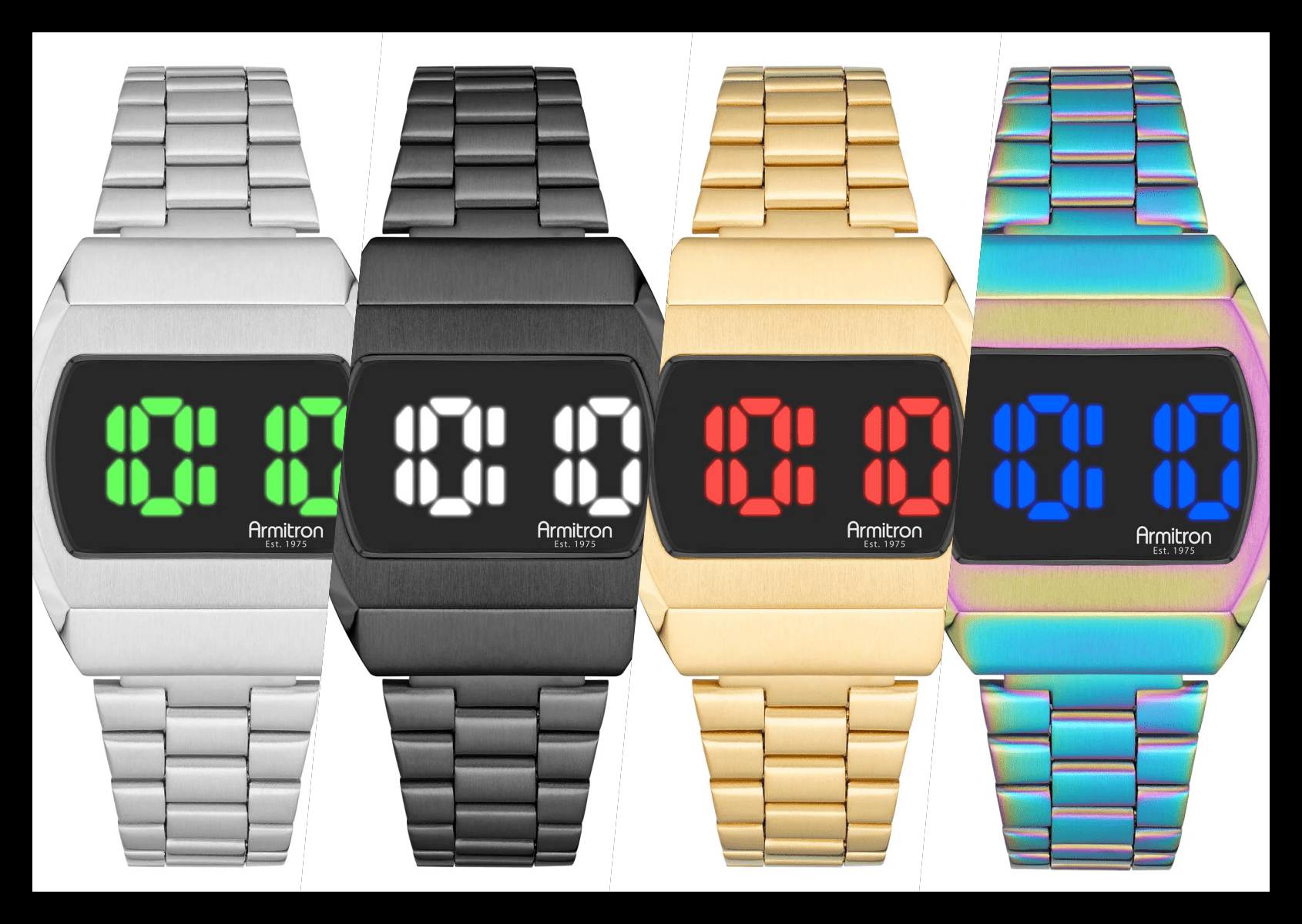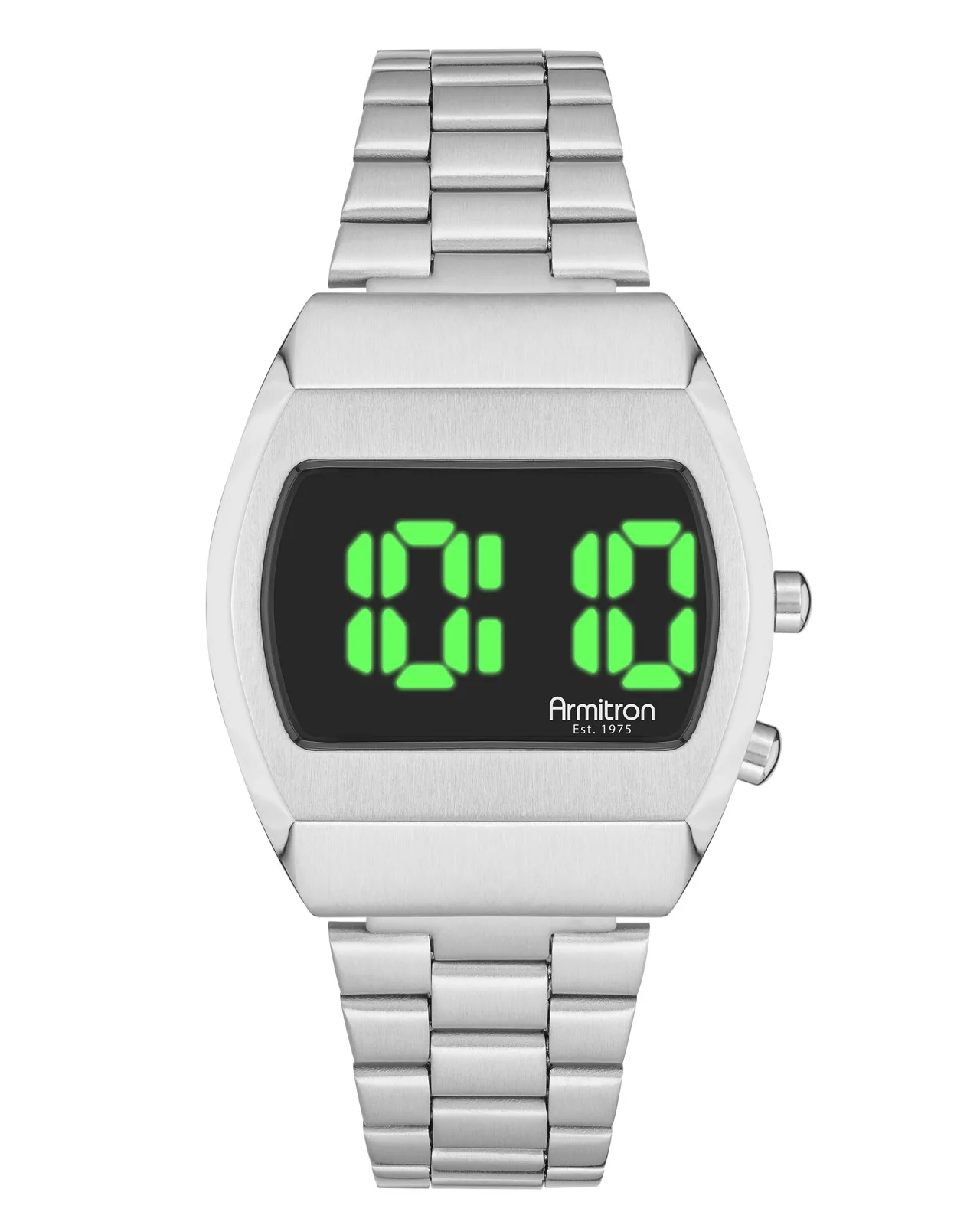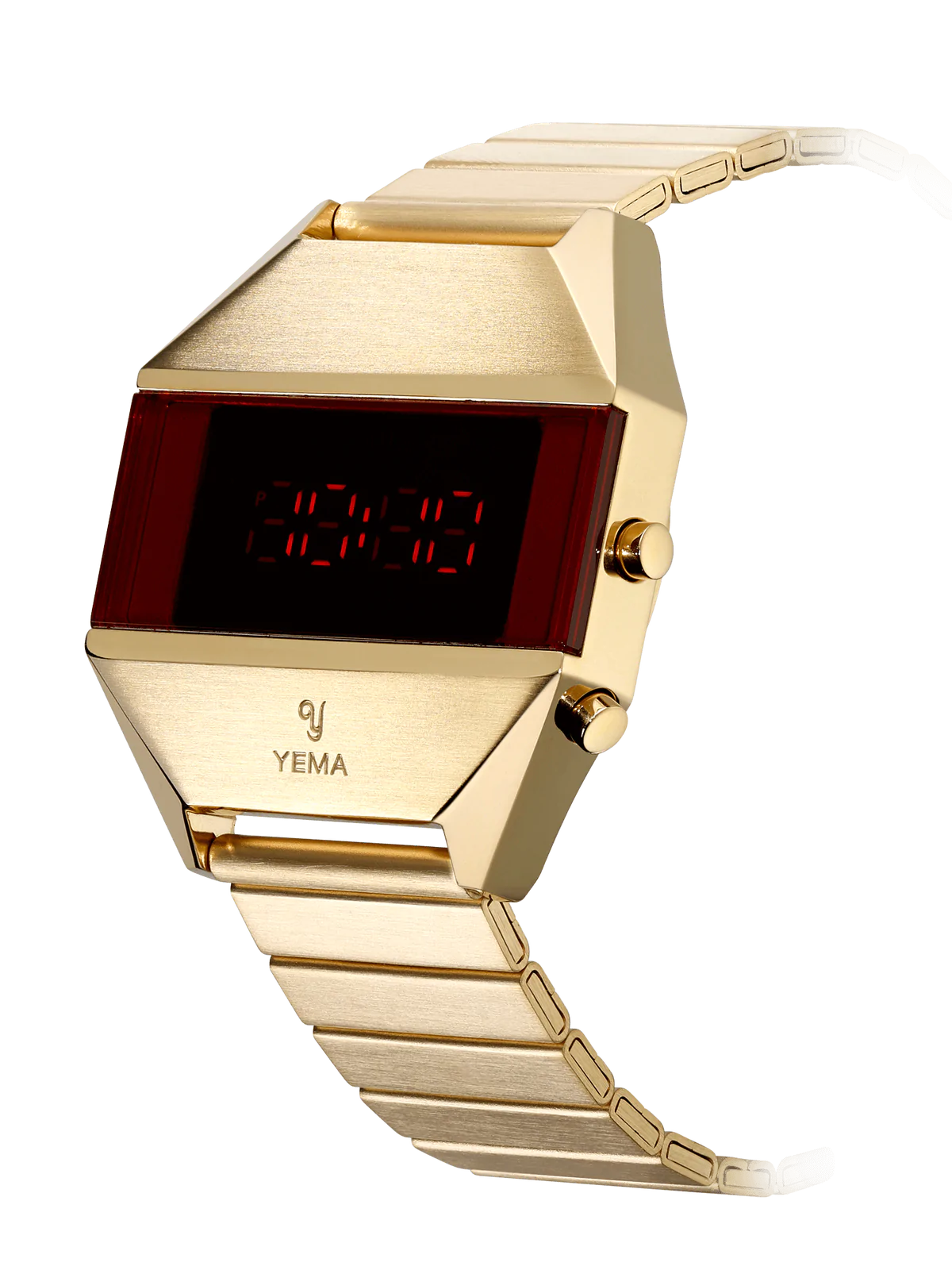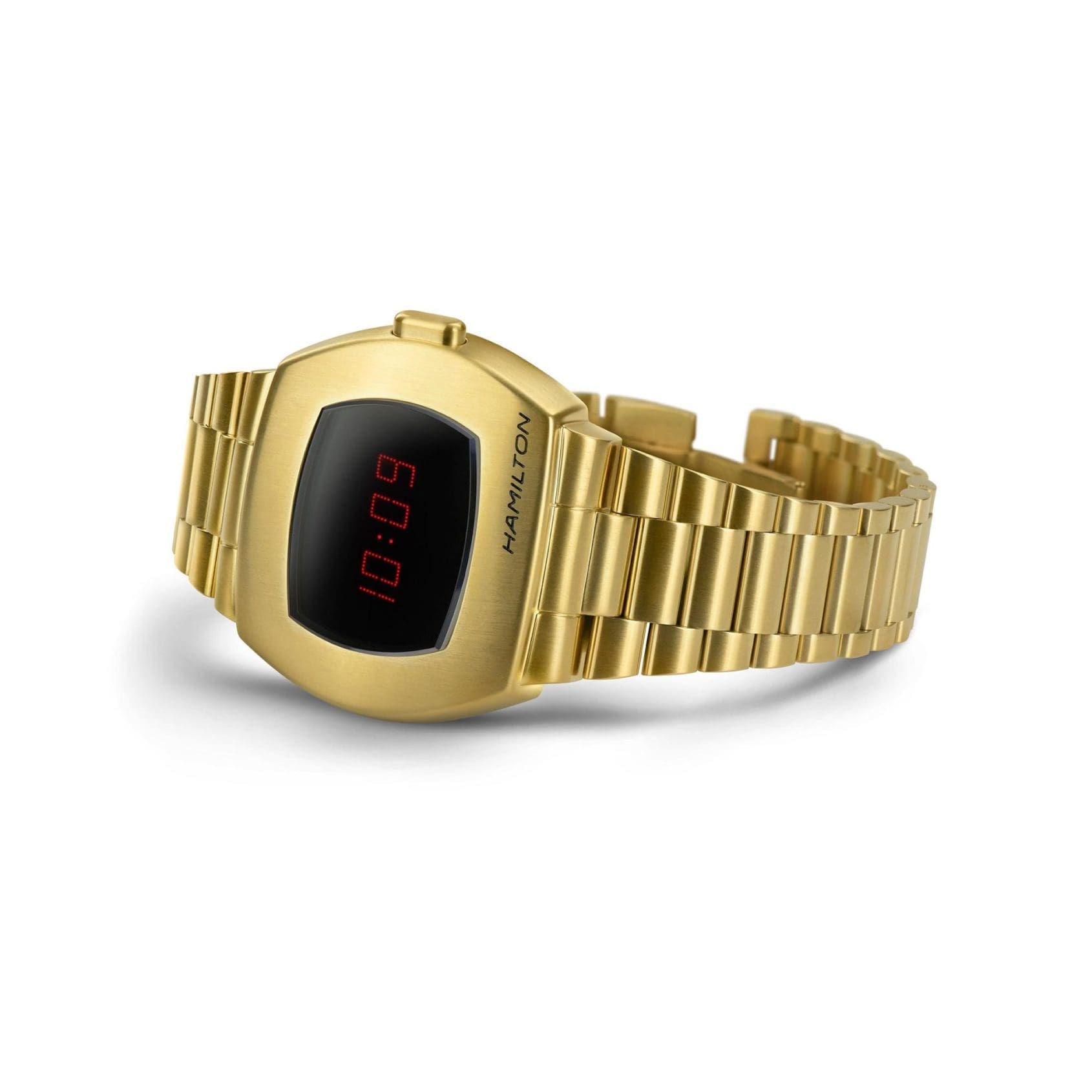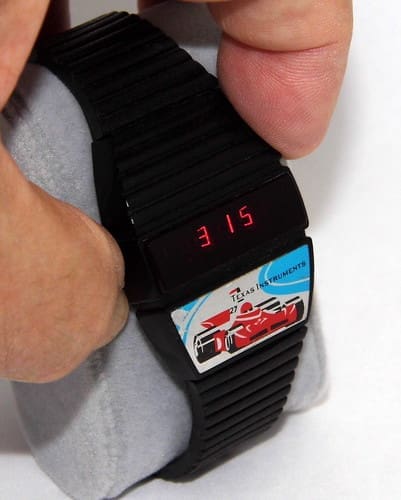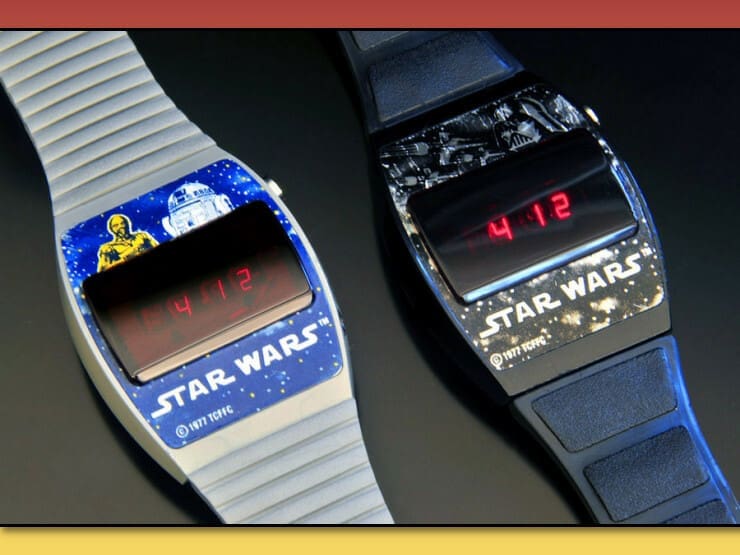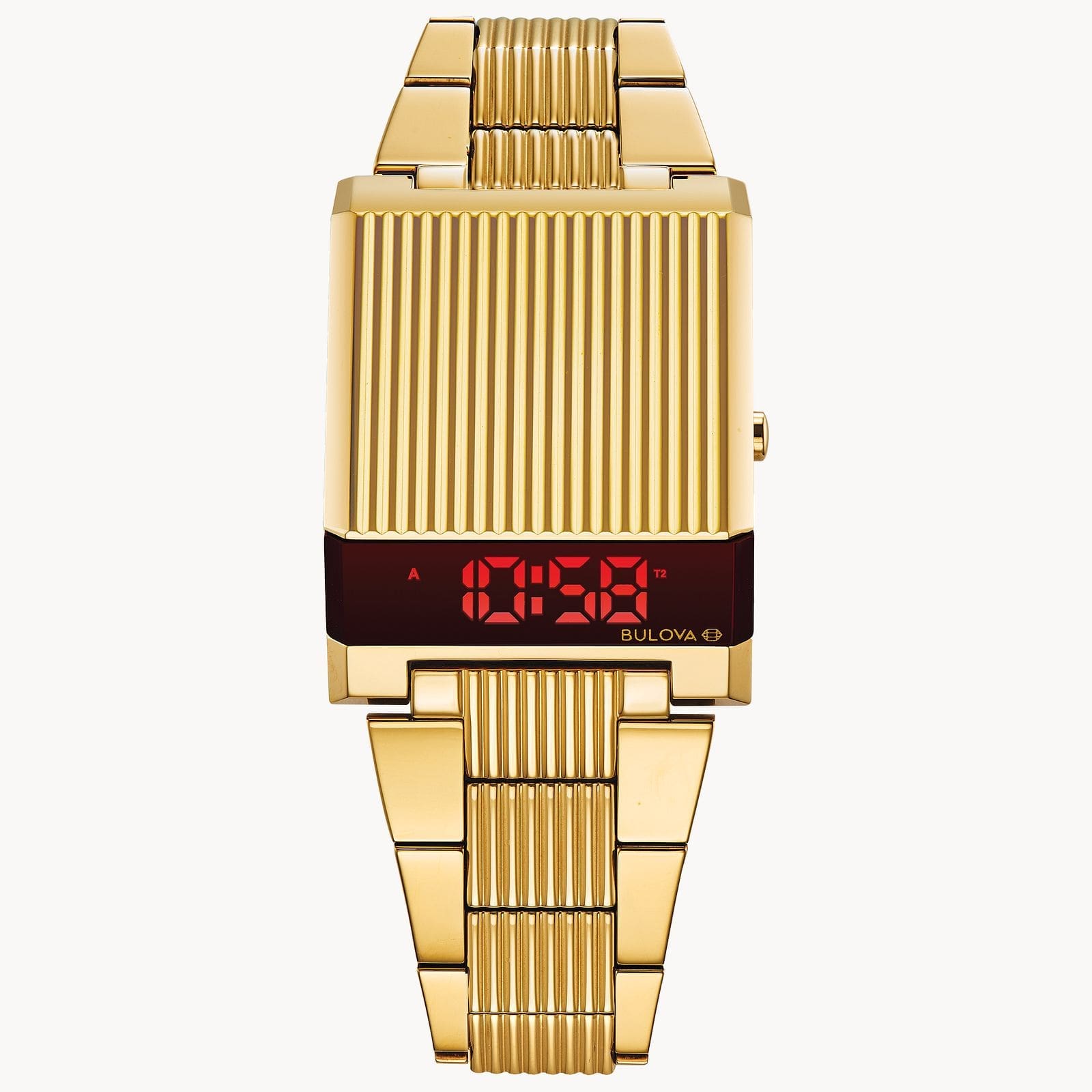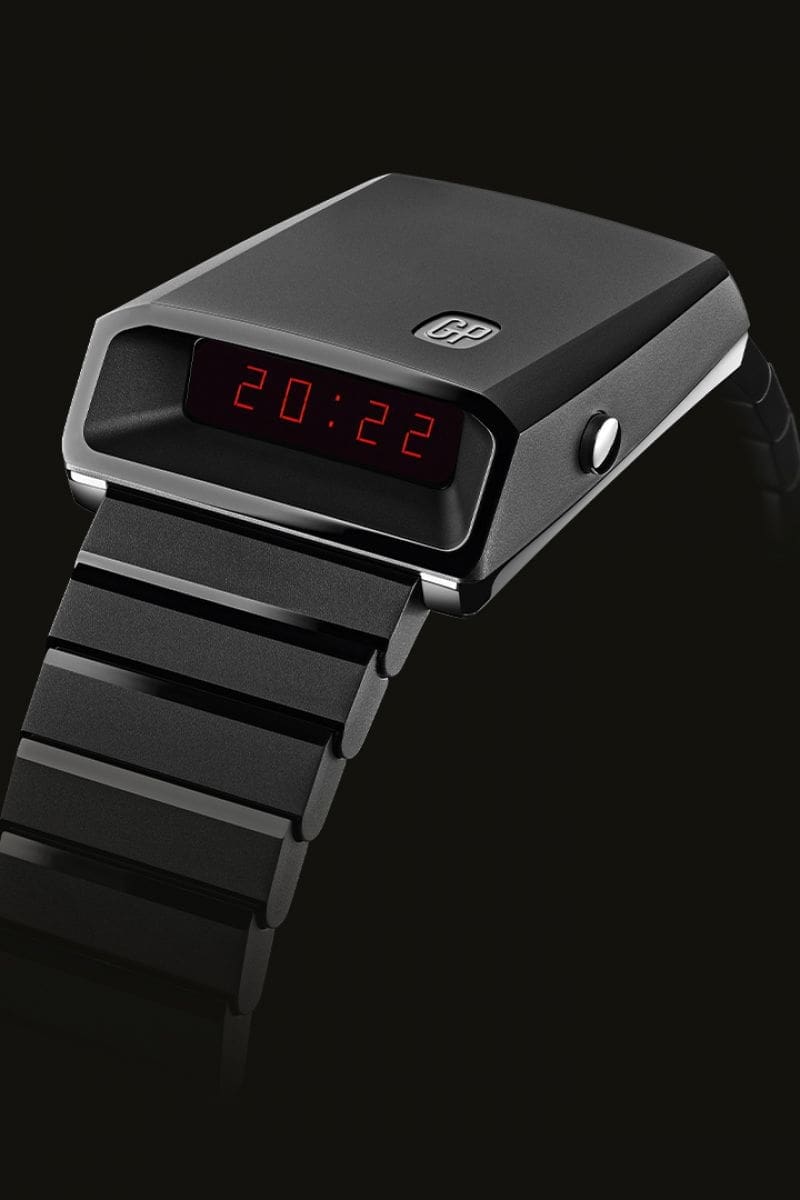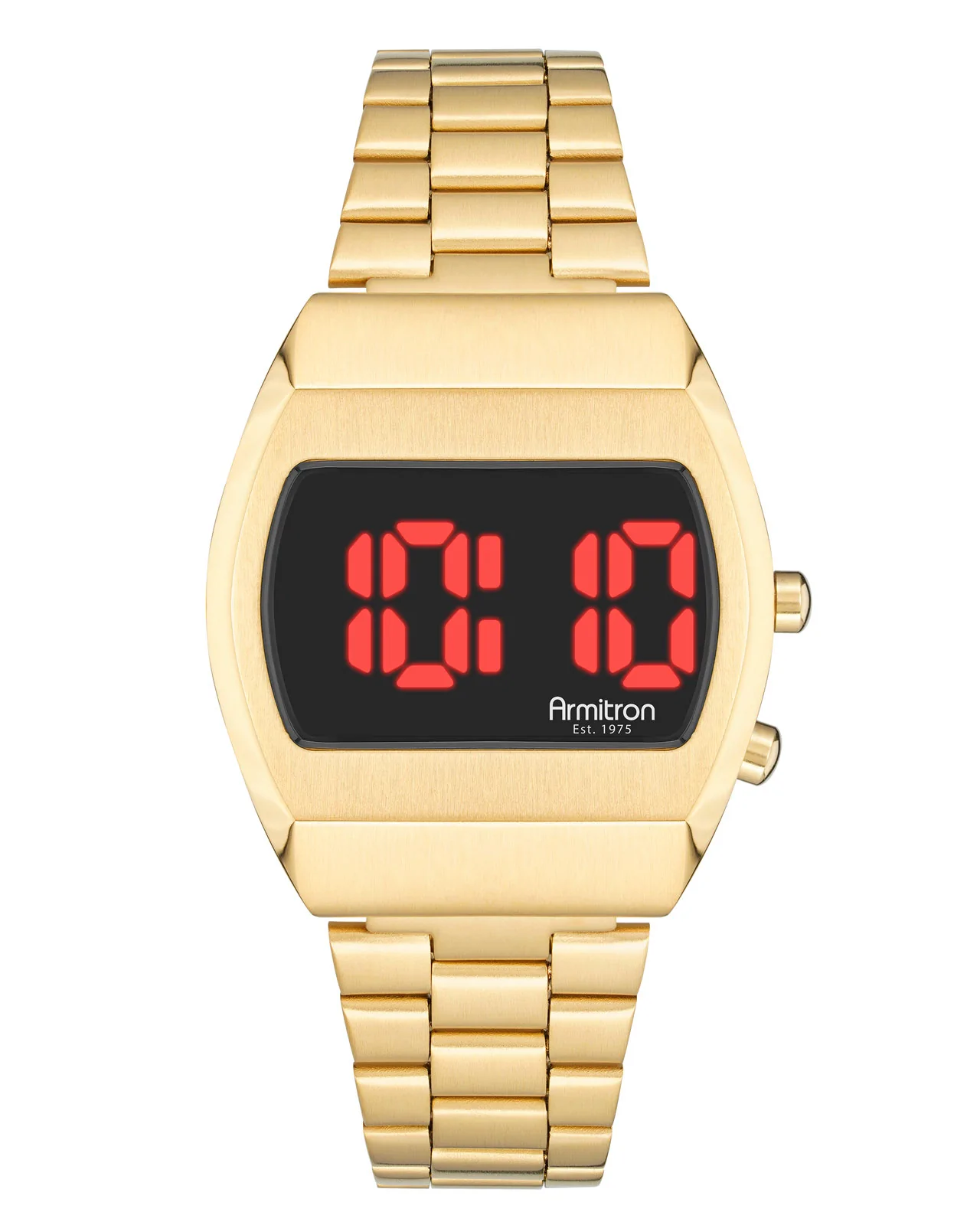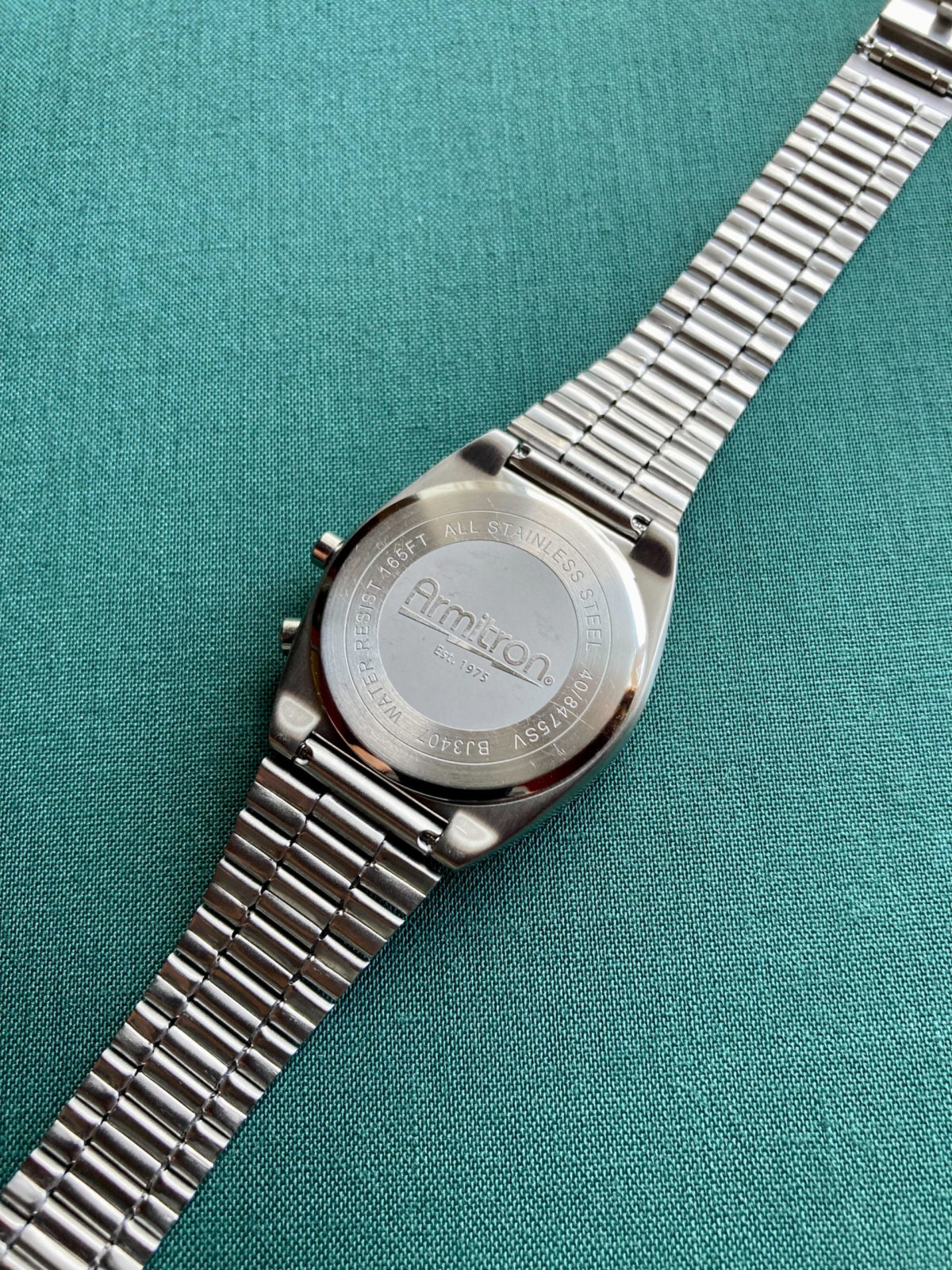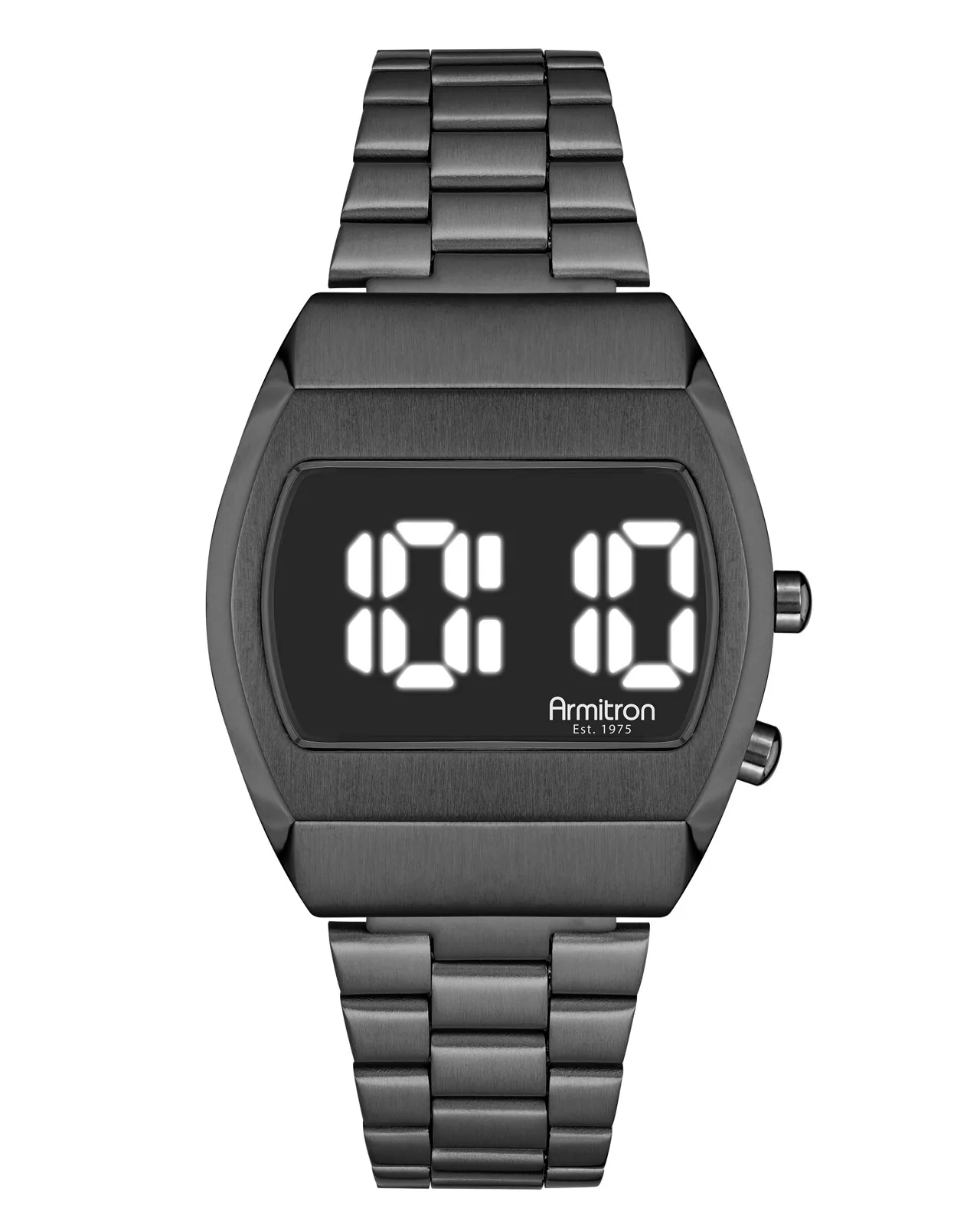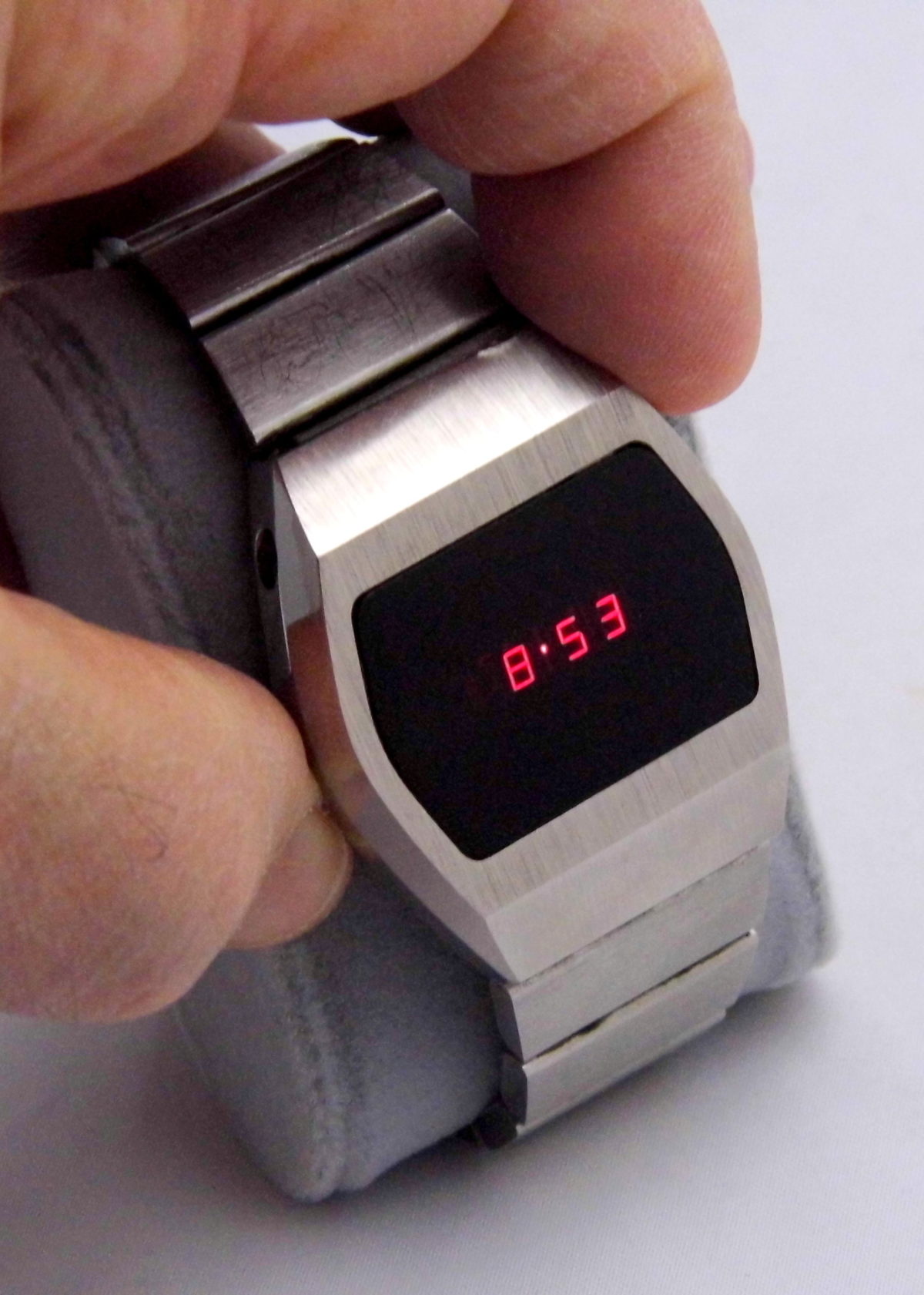I spent $35 on a digital LED watch that had no right being this good: The Armitron Griffy
D.C. HannayIn a world where prices seem to climb in a never-ending upward spiral, it’s nice when you run across something that, against all odds, defies economic trends and sheer logic with its value. But here’s the Armitron Griffy, a fun and funky little gem of a retro LED watch, with a build quality that belies its bargain-bin price. I’m still shaking my head at this one. Once you hold one in hand, you’d think the retail would be somewhere in the neighbourhood of $150-$200. And you’d be wrong. The retail price of the watch above is a mere $60 USD, but get this: I got mine for a stupefying $35 from our digital overlords at Amazon, and I’ve seen the same model with the blue display for an unreal $29. At that price, it can’t be that good. I mean, it’s got to be a flimsy, lightweight toy, right? Wrong.
I don’t know how Armitron did it, but here we have an astonishingly well-made stainless-cased LED watch at an unbelievable price, $35 in my case, which was basically the loose change lingering in my PayPal. At that price, you could pick up seven of the eight versions Armitron offers for around the same price as its closest competition, the stylishly angular Yema LED, which goes for $249 in stainless, or $279 in goldtone.
They’re both neat little slices of retro heaven (and functionally similar), with the tonneau-shaped Armitron sporting a smallish case size at 34mm across and 37mm lug-to-lug. But is the Yema $200 better than the Armitron? My wallet says no.
Without going too hard into a historical deep dive, digital LED (light emitting diode) watches burst onto the scene in the early ‘70s with the advent of the solid gold Pulsar PSR, which retailed for an eye-watering $2,100 (nearly $15,000 in today’s dollars). Hamilton even reissued it a couple years ago in gold PVD (above), and it’s now available in stainless-steel or black. As with all new technologies, the LED display trickled down to the masses a few years later, and you could have the wristwatch of tomorrow for prices as low as $20 (or less).
Accordingly, they were a bit more plebeian in their build quality, but dammit, Kid Me loved his black plastic Texas Instruments TI-503-1 with the race car on the bezel.
Even droids were telling us that LED timekeeping was the future! But alas, it wasn’t meant to last. Cheaper and more energy-efficient LCD displays soon knocked the battery-hungry glowing red future off its technological perch, and LED watches were relegated to the dustbin of history. Until today.
The recent resurgence of LED watches kicked off with Hamilton’s PSR reboot, and along with Yema, Bulova joined the fray with their over-the-top Computron reissue, a bold piece that requires a good deal of confidence to pull off.
Even the high-end of Swiss watchmaking has gotten in on the retro action, with Girard-Perregaux’s modern ceramic/titanium version of their 1976 Casquette retailing for a not-insignificant $4,700 USD. But we’re not floating in that rarefied air today.
Whether you’re a retro-techie, an ironic hipster, or a Gen X-er trying to relive their childhood, the Armitron Griffy offers an extremely satisfying experience at a mindbendingly low price. And while the contenders above are certainly worthy wrist companions, if you’re just looking to dip a toe in the retro pool, you’d be hard-pressed to find anything close to the Griffy at such a low price. At a glance, you’re getting a solid 316L stainless case (most digital watches under $100 are going to be plated resin, or possibly brass), 50 metres of water resistance, a super-bright display with large numerals, and a great selection of colour and finish options, with eight combinations in total. Case finishing is mostly brushed, with polished bevels (very nicely done, I might add), and everything is stainless steel. You can select from stainless, gold, black, or iridescent finishes, depending on your tastes.
Functionality is similar to most LED watches: You depress the right-side button to turn on the time display, press again to show the date, and once more to display the seconds. Time setting is accomplished via the button below at “4”, and you can also display the time in a 24-hour format. The button press is necessarily the most practical way to employ LED in a watch, as an always-on display would eat through the battery in short order. The displays come in your choice of red, blue, green or white.
The black finish with white display is especially futuristic, and the gold/red combo is a disco-era throwback classic. I selected my stainless/green model over the others, perhaps due to a subconscious visual association to the LED metres of the vintage stereo gear I’m irrationally fond of. And speaking of vintage, if you didn’t know, Armitron has its own history in the LED watch field.
Still a family-owned American company, they were producing LED watches back in the ‘70s, too. While not as known as bigger names like Casio or Timex, Armitron has a long history of reliable products at attractive prices. And while the watches are imported (like everything at its price point), the quality is remarkably satisfying for the money. If I have any nits to pick, it’s with the bracelet. It’s all stainless, but the links are folded, understandable at the asking price. The links are fully compressed, however, so although thin, there’s not the hollow feeling that many folded-link bracelets have. It’s easily adjustable by sliding the clasp to the proper length, and attachment is accomplished by hooking the end of the bracelet over the clasp and snapping it closed. A bare-bones affair, but it works fine and feels secure, if a bit of a hair-puller for the hirsute of wrist. If I had one wish-list item granted, it would be for a more substantial solid link bracelet with a regular clasp, something I think could be upgraded without a huge bump up in price, considering the economies of scale that Armitron must surely be able to leverage. All in all, the Armitron Griffy is a fantastic bit of retro goodness for the price of a nice lunch out. Aside from wishing for a more refined bracelet (or even a rubber strap option), there’s absolutely nothing I’d change at the asking price. You too can bask in the glow of the digital past at Armitron’s website.




